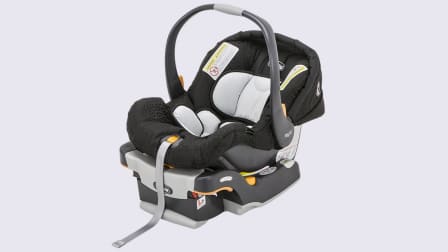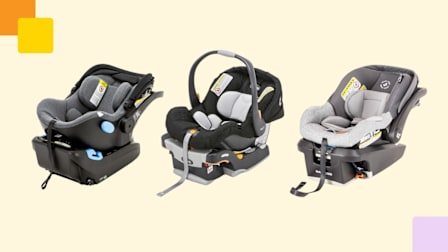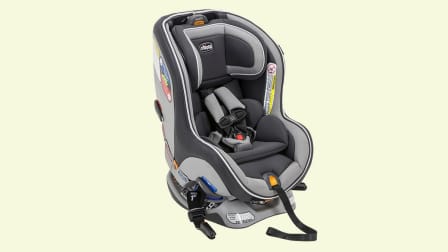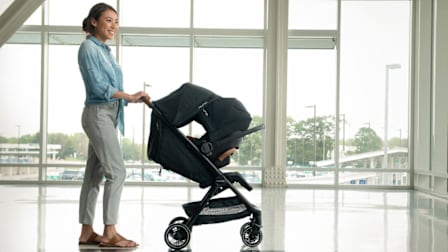Should You Replace Your Car Seat After a Crash?
As part of our Is It Safe? series, a CR expert says that even if the car seat appears undamaged, hidden issues could affect safety later on
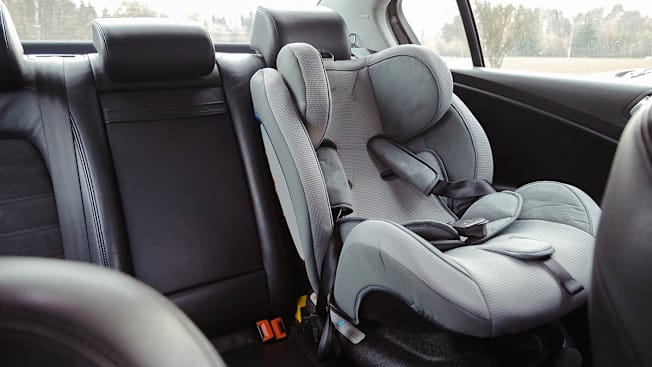
Child car seats are designed to protect your kids. But what should your next step be if your car seats have been involved in a crash? Are they still safe to use?
Those were the exact questions Emily A. Thomas, PhD, CR’s associate director of auto safety, had after she was recently rear-ended on the highway. (Yes, even CR’s safety experts aren’t exempt from the perils of the road!) While she’s safe—and thankfully, her children weren’t in the car with her—her children’s car seats were installed in the vehicle at the time of the crash.
The good news for parents who may find themselves in a similar situation: Depending on the severity of the crash, you may not need to replace your car seats. Here’s what to know—and if you do need to get new seats, here are our best tips for navigating insurance coverage and finding your next car seat.
What Happens to Your Child's Car Seat in a Crash?
Your child’s car seat has been tested to ensure it meets established safety standards to protect your little one in the event of a crash. But your car seat isn’t necessarily designed to be able to withstand a second crash. The incredibly strong forces at work during a moderate to severe collision can put stress on the car seat, compromising its structural integrity and impacting its ability to protect your child in a future crash, Thomas says. “While you might not see any visible damage to the car seat, that doesn’t mean that it’s not there, so why take the risk?”
What NHTSA Says About Replacing Car Seats After a Crash
According to the National Highway Traffic Safety Administration, you should never use a car seat that has been involved in a moderate to severe crash. However, “car seats do not automatically need to be replaced following a minor crash,” the agency says.
Do You Have to Replace Your Car Seat After a Fender Bender or Minor Crash?
Here’s how NHTSA defines a minor crash: All of the following criteria must apply for it to be considered minor, as opposed to moderate or severe.
- The vehicle was able to be driven away from the crash site.
- The vehicle door nearest the car seat was not damaged.
- None of the passengers in the vehicle sustained any injuries in the crash.
- If the vehicle has airbags, the airbags did not deploy during the crash.
- There is no visible damage to the car seat.
If one or more of the criteria above doesn’t apply to your crash, it’s considered moderate or severe, not minor.
In Thomas’ case, the crash she was involved in was considered moderate, as the airbags were deployed and both vehicles needed to be towed from the collision site. She met the other criteria—the doors nearest her kids’ car seats were not damaged, she didn’t see any visible damage to her kids’ car seats, and she didn’t sustain any injuries—but, again, all criteria must be met for the crash to be considered minor.
“I’ve been rear-ended before, but nothing as severe as this,” Thomas says. “I’m grateful that my kids weren’t with me and that I still had their car seats secured properly so they didn’t become projectiles.”
Why You Should Always Check Your Car Seat Manual After a Crash
It’s a good idea to check your car seat’s manual for safety information after a crash, and to contact the manufacturer’s customer service department with any questions—or if it’s unclear from the manual what to do next.
It is possible, however, that if you contact your car seat’s manufacturer directly, it may tell you to replace any car seat involved in a collision, no matter how minor. Some manufacturers recommend replacing car seats after any type of collision, regardless of the severity.
“Defining what qualifies as a ‘minor’ crash can be complex and subjective,” car seat manufacturer Chicco writes on its company blog. “No matter how small an incident might seem, we recommend erring on the side of caution and replacing your car seat even after a minor crash. This precautionary measure ensures that your little one continues to be safeguarded by a car seat that’s in optimal condition.”
“Ultimately, NHTSA provides guidance about car seat replacement after a crash, but your car seat manufacturer has the final word,” Thomas says.
Factors to Consider After a Crash
Not sure whether to replace your child’s car seat after a crash? Here’s your checklist for what to consider.
Assess the severity of the crash. Was it minor, moderate, or severe, according to NHTSA criteria? If moderate or severe, you should replace your car seat.
Is there any visible damage to the car seat itself? If there’s visible damage, replace your car seat.
Is there any visible damage to the car seat harness, tether, LATCH attachments, or seat belts in the vehicle? If damage is visible to any of these elements, replace your car seat.
How old is the car seat—does it have an expiration date? Is it already affected by a lot of wear and tear? If it’s nearing its expiration date or seems worn out, consider replacing.
Check your car seat’s manual. Does it recommend replacing after any collision? You can also call the manufacturer’s customer service department to ask more questions.
Will insurance cover the cost of a replacement? If insurance will pay for a new car seat, it’s worth replacing it for the peace of mind.
These guidelines all apply whether passengers were in the car seats during the crash or not, because crash forces could still have an impact on the car seat even without an occupant in the seat.
Will Insurance Cover a Replacement Car Seat After a Crash?
In some cases, your insurance—or the other party’s insurance—may pay for a car seat replacement after a crash. It’s worth taking the steps to file a claim and checking to see if insurance coverage is possible. If it’s safe for you to do so, document the crash from all angles with your phone’s camera, including photos of the car seats installed in your vehicle.
If the police are involved, be sure to explain that you have car seats installed in the vehicle, whether or not your child was present at the time of the crash. That way, your car seats will be written into the police report from the event, which an insurance company may request when determining coverage.
If you need to purchase a new car seat after a crash, save all receipts to file with the insurance company for potential reimbursement.
Your insurance company may ask you to properly dispose of your damaged car seat: you’ll need to cut the car seat straps, remove the padded covers, and write “Do not use” on the shell.
And if you’re looking for a new car seat? Check out our top-rated recommendations, all of which have been crash-tested to evaluate for additional safety beyond the federal standard. CR’s ratings on the best convertible car seats, infant car seats, all-in-one car seats, and booster seats are available without a subscription.




























































